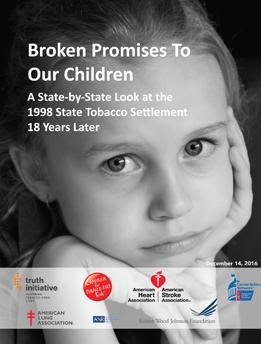The Centers for Disease Control and Prevention (CDC) has created a new feature article web page titled Countdown to Quitting. It outlines the elements of a quit plan as well as other tools that can increase a smoker’s chance for a successful quit attempt. The article also highlights Beatrice, a participant in the Tips From Former Smokers Campaign.
Beatrice made the decision to quit in 2010, after smoking for more than 25 years. Beatrice’s greatest motivator was her son, who wrote her a letter at age 11 asking her to quit. “When I was going through the process of quitting, that letter was very motivating for me,” she says. She encourages anyone who wants to quit smoking to do it-and to get help.
The Nebraska Tobacco Quitline is continuing its offer of a no-cost, two-week supply of nicotine replacement aids (gum, patches or lozenges) through January 31, 2017, while supplies last and if the caller is medically eligible.
Call 1-800-QUIT-NOW (784-8669) for more information. In Spanish, call 1-855-DEJELO-YA (335-3569). Or visit QuitNow.ne.gov
Tobacco Free Nebraska (TFN) will hold its State Coalition meeting on January 25 at the Cornhusker Marriott Hotel, 333 South 13th Street, Lincoln, NE from 11:30 a.m. to 2:00 p.m. Agenda items include:
RSVP to Kathy.Burklund@nebraska.gov by January 20 at 5 p.m. There is no cost to attend and lunch is provided.
The Tobacco Control Legal Consortium has basic information for state and local policymakers, advocates and others on policy implications related to raising the minimum legal sale age for persons to whom tobacco products may be sold.
Tobacco 21: Tips and Tools provides a series of legal technical assistance guides to serve as a starting point for organizations interested in implementing certain tobacco control measures.
The annual report, Broken Promises to Our Children: A State by State Look at the 1998 Tobacco Settlement 18 Years Later, from Campaign for Tobacco-Free Kids, finds that, despite receiving huge sums from the tobacco settlement and tobacco taxes, states continue to shortchange tobacco prevention and cessation programs.
Nebraska ranks 25th in state expenditures on tobacco prevention, spending $2.6 million, which is 12.4% of the recommended level of $20.8 million by the CDC.
To view the full report and other state data, go here.

A multidisciplinary collection of recent research by Center for Tobacco Products-funded researchers has been published in Tobacco Control (November 2016) as a Supplement: Flavoured Tobacco Products in the United States.
Flavored tobacco products are widely considered to be ‘starter’ products for young users and may encourage experimentation or reduce ‘harshness’ associated with more established products. Citing the National Adult Tobacco Survey (2013-2014), flavored non-cigarette tobacco product use was present in 82% of hookah users, 68% of e-cigarette users and 36% of cigar users.
Flavored tobacco product use, in general, was higher among young adults aged 18-24 than older adults.

A recent article, The Prevalence of Exposure to Workplace Secondhand Smoke in the United States: 2010 to 2015, published in Nicotine & Tobacco Research (November 14, 2016 Epub ahead of print), highlights the continued disparity of secondhand smoke (SHS) exposure by industry, occupation, and social demographic class.
The prevalence of exposure to workplace SHS among currently working nonsmokers was 10.0% in 2015 and 9.5% in 2010. Exposure to workplace SHS is disproportionally high among male workers, young workers, non-Hispanic blacks, Hispanics, workers with low education and low income, and workers residing in the Southern United States.
Tobacco control policies have effectively reduced exposure to workplace SHS in a few white-collar and service job categories but blue-collar workers remain to have a high prevalence of exposure to workplace SHS. From 2010 to 2015, “transportation and warehousing industries” had the largest increase in SHS exposure (13.3%-21.5%) and “arts, entertainment, and recreation industries” had the largest decline in prevalence of exposure to SHS (20.1%-11.5%).

A new report (January 2017) issued by the National Cancer Institute and the World Health Organization finds that tobacco use does not contribute to economic development around the globe. In fact, tobacco use burdens countries with more than $1 trillion annually in health care costs and lost productivity.
The report, The Economics of Tobacco and Tobacco Control, is the first comprehensive review of the economic impact of tobacco use and global tobacco control efforts in nearly 20 years. The report underscores that tobacco use disproportionately harms the world’s most vulnerable populations, with tobacco use increasingly concentrated among the poor and other vulnerable groups.

Monitoring the Future (University of Michigan, December 2016) is an ongoing study of the behaviors, attitudes, and values of American secondary school students, college students, and young adults.
Each year, a total of approximately 50,000 8th, 10th and 12th grade students are surveyed (12th graders since 1975, and 8th and 10th graders since 1991). In addition, annual follow-up questionnaires are mailed to a sample of each graduating class for a number of years after their initial participation.
Results from tobacco-use questions can be found here.
A recent study found that children and adolescents more frequently exposed to Point of Sale (POS) tobacco promotion have around 1.6 times higher odds of having tried smoking and around 1.3 times higher odds of being susceptible to future smoking, compared with those less frequently exposed. Point-of-sale tobacco promotion and youth smoking: a meta-analysis. Tobacco Control (Supplement December 2016).
Two-day CME/CE Certified Training presented by Rutgers Robert Wood Johnson Medical School. Hosted by The Bridge Behavioral Health. For more information and to register click here.
The American Cancer Society Tobacco-Free Generation Campus Initiative has grants available for colleges and universities dedicated to 100% smoke-free or tobacco- free initiatives. Grant guidelines available here.
An annual day of activism that empowers youth to speak up and seize control against Big Tobacco. Information and applications available here.
The premier gathering of the United States Tobacco Control Movement. Registration deadline is February 27, 2017. Early registration is recommended and available here.
|
Quick Links |

Comments